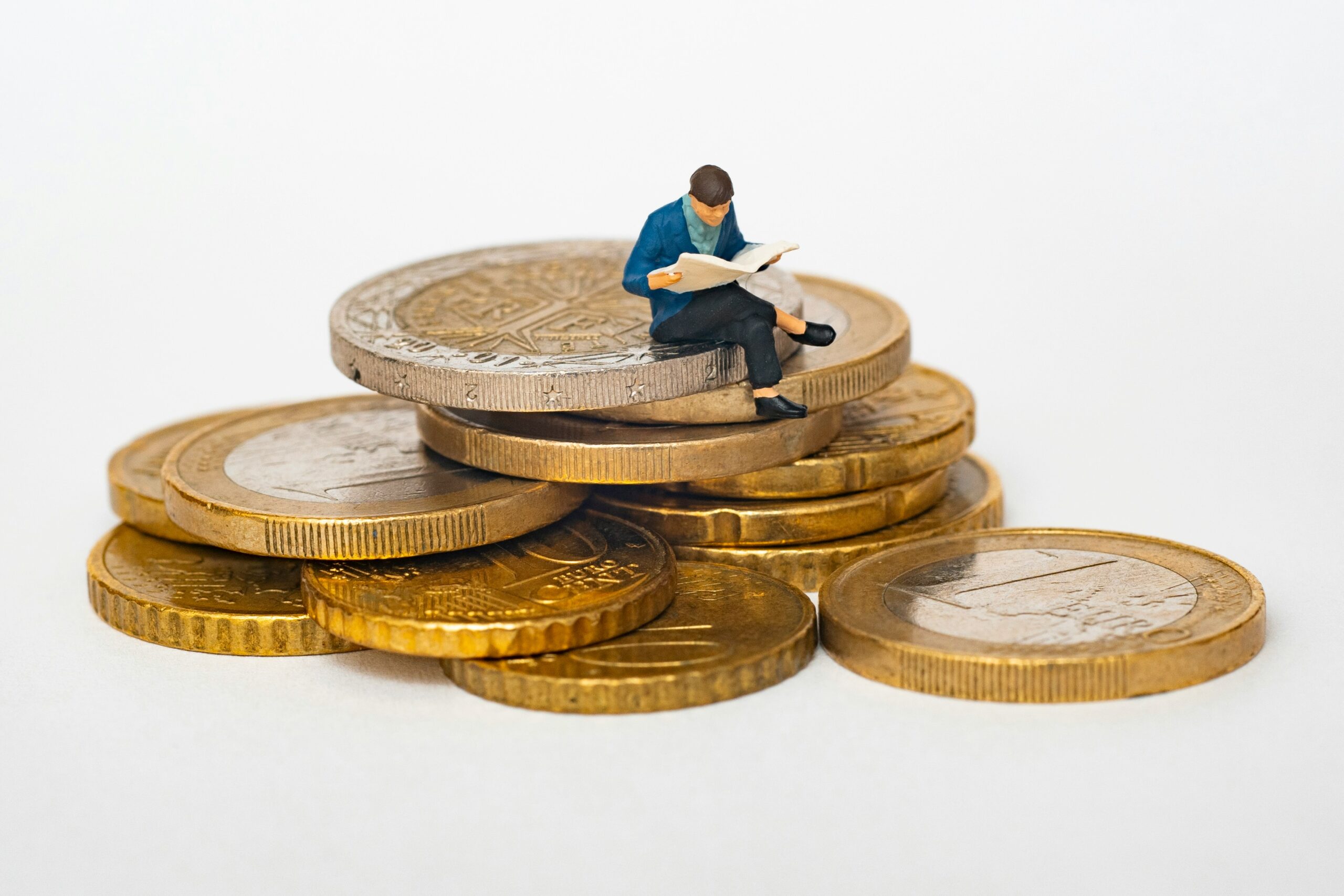Accelerate Your Savings: Navigating High-Interest Savings Accounts
Understanding High-Yield Savings
High-yield savings accounts (HYSAs) are like that not-so-secret weapon folks are using to fatten up their piggy banks. They beat the heck outta what’s offered by those dusty old savings accounts that kinda just hold your cash hostage without much in return. HYSAs throw in better interest rates, and folks see their cash pile grow a lot quicker.
Benefits of High-Yield Accounts
Why do people love these accounts? Think of it as the cool cousin of the savings world. Here’s what they’ve got going for them:
-
More Bang for Your Buck: HYSAs can earn you APYs (Annual Percentage Yields) from the 3% – 4% range or even more sometimes. Compare that with the teensy 0.01% to 0.35% you’d skyrocket to on a normal savings account, and it’s not even a close race.
-
Magic of Compounding: Loads of these high-yield guys let your interest pile up on the daily or monthly, which means your money is always busy earning more friends — the more, the merrier, right?
-
Quick Cash Grab: Need cash for a rainy day or surprise bills? High-yield accounts let you grab your funds when you need ‘em, and they keep ‘em snug and secure till then.
| Feature | High-Yield Savings Accounts | Traditional Savings Accounts |
|---|---|---|
| Average APY | 3% – 4%+ | 0.01% – 0.39% |
| Compounding Frequency | Daily or Monthly | Varies |
| Accessibility | High | High |
Differences from Traditional Savings
The biggie when it comes to high-yield savings accounts versus the old-school variety? Those sweet APYs. HYSAs are pretty upfront about giving you better earnings — I mean, they’re tossing out rates way higher than the usual suspects.
But wait, there’s more! Banks juggle interest rates like nobody’s business, especially with the Federal Reserve’s latest shuffles. But even when traditional savings accounts start losing their shine, high-yield options might still be standing strong, sometimes even staying a step ahead of inflation sneaking around the corner.
If you’re scoping out ways to make your savings actually work, do some detective work on these high-yield accounts. You might even want to play around with a high-yield savings account calculator to daydream what your money could do over time.
Choosing a High-Yield Account
Picking the right high-yield savings account is like finding that perfect snooze button—it needs to serve your needs just right. We’ll look at interest rates, weigh online versus traditional banks, and check out accessibility and fees.
Comparing Interest Rates
Interest rates are like coffee: some give you a jolt, others just warm fuzzies. Typically, online banks and credit unions outshine traditional banks with their high rates. Picture this: Some accounts boast an eye-popping 6.17% APY. Get a load of these current rates from the big wigs:
| Bank | APY (%) |
|---|---|
| Marcus by Goldman Sachs | 3.90 |
| Ally Bank | 4.00 |
| Synchrony Bank | 4.30 |
| Varo Bank | up to 5.00 (variable) |
Keeping an eye on high-yield savings account interest rates ensures you’re not missing out on the good stuff.
Online vs. Traditional Banks
Online banks are the new kids on the block and they come with perks. They’re usually offering better interest rates because they don’t have those pesky overhead costs. That’s why you often won’t see those dreaded monthly fees or high deposit demands (CNBC Select).
On the flip side, traditional banks might make you jump through hoops with more fees and larger minimum balances. If you’re looking to boost your nest egg, heading over to an online bank or credit union could keep more nickels in your pocket.
Accessibility and Fees
Think accessibility like a good drive-thru—quick, easy, and no hassle. Online banks hand you slick apps and websites to manage your dough effortlessly. Most high-yield accounts leave fees at the door, especially compared to their in-person counterparts.
Look for accounts with:
- Zero monthly fees
- Little or no minimum balance
- Smooth online access for moving money around
These features make saving a breeze and give your wallet room to grow. For the full story, check out high-yield savings account comparison.
By rating interest rates, sizing up banking types, and weighing fee structures, individuals can pick a high-yield account that doesn’t just collect dust but actually serves them well.
Maximizing Returns
Growing your money in a high-interest savings account isn’t rocket science, but it does help to know what makes these accounts tick and how compound interest can work its magic. With a little know-how, everyone can shake a little extra cash outta their savings.
Factors Affecting Returns
Here’s a peek behind the curtain on what affects the returns from these snazzy high-yield savings accounts:
-
Interest Rates: These accounts aren’t your run-of-the-mill savings spots. They offer tantalizingly higher rates than you’d find elsewhere. For example, while regular savings accounts might give you a measly 0.39%, some high-yield accounts flaunt rates upwards of 4%. By 2025, expect even juicier APYs, like 4.5% or more, which is almost nine times the usual fare (Bankrate).
-
Compounding Frequency: It’s all about how often they tally up your interest. Accounts that compound daily let your money earn on top of itself quicker than monthly ones, spreading joy in the form of more interest.
-
Inflation Rates: Everyone’s nemesis, inflation, can nibble away at your hard-earned cash. Thankfully, high-yield savings accounts are like the knight in shining armor, typically staying ahead of inflation’s reach (Bankrate).
-
Fees: If there’s one thing you don’t want, it’s fees eating up your savings like termites. Hunt for accounts with low to no fees; that’s extra money in your pocket, not the bank’s.
| Factor | Impact on Returns |
|---|---|
| Interest Rate | Higher rates, more moolah |
| Compounding Frequency | Daily beats monthly |
| Inflation | Real earnings may shrink |
| Fees | Lower fees, happier wallet |
Compound Interest Explained
Now let’s talk about compound interest—it’s kinda like a money snowball. As interest piles up, it earns more interest, making it better than those accounts that don’t “get” compounding. How does this thingamajig work exactly? Here’s the lowdown:
The formula:
[ A = P(1 + r/n)^{nt} ]
Where:
- ( A ) = future savings total
- ( P ) = starting stash (what ya deposited)
- ( r ) = annual rate (a fraction, ya know)
- ( n ) = how often interest shows up to work each year
- ( t ) = number of years your dough sits around
Say you stash $1,000 at a sweet 4.5% APY, compounding daily, for five years. Watch how it grows:
| Year | Balance at Year-End |
|---|---|
| 0 | $1,000 |
| 1 | $1,045.16 |
| 2 | $1,090.44 |
| 3 | $1,136.09 |
| 4 | $1,182.11 |
| 5 | $1,228.52 |
And there you have it! By harnessing the benefits of high-interest savings accounts and understanding factors like how the interest rate and compounding can snowball your savings, you’re better set to see your stack of cash grow over time. Get more helpful tips on finding the perfect account at our high-yield savings account comparison.
Managing High-Yield Savings
High-yield savings accounts are a handy tool for helping folks hit their money goals and feel a bit more secure about their finances. Keeping these accounts in check means knowing what you want to save up for and having some rainy day money ready to go.
Setting Financial Goals
Nailing down your money goals is a smart move if you want to really get the most out of those high-interest savings accounts. These goals can be different for everyone—maybe you’re dreaming of a big vacation, need a set of wheels, or thinking about that first house.
To get those goals in shape, here’s what you might want to do:
- Define the Goals: Know what you’re aiming for and pin down the cost.
- Establish a Timeline: Decide when you’ll need that cash. This will tell you how much to tuck away each month.
- Determine the Amount Needed: Figure out how much dough you’ll need by your deadline.
Say, for instance, you’re looking to collect $5,000 for a big trip in two years. That breaks down to about $208 a month. Having clear goals like this turns saving into a smooth operation.
Creating Emergency Funds
An emergency fund? It’s your best friend in a bind. High-yield savings accounts are great for building these funds up since they cough up more interest than your standard savings deal (NerdWallet). Aiming for a stash worth about three to six months of living expenses is usually a good rule of thumb.
Here’s a quick guide to building an emergency fund:
| Step | Action |
|---|---|
| 1. Assess Monthly Expenses | Tally up what you spend each month (think rent, groceries, and utility bills). |
| 2. Set a Target | Figure out the total cash you’d need for that emergency fund based on monthly outgoings. |
| 3. Open a High-Yield Savings Account | Putting your emergency fund in a high-yield account can beef up the interest you earn. |
| 4. Automate Savings | Set the account to automatically suck some money from your checking to make it a no-brainer. |
By cracking the code on managing these high-yield accounts and sorting out money goals and emergency funds, folks can get a better grip on their financial safety net. Want to see the full story on the perks of high-yield savings accounts? Check out our article on high-yield savings account pros and cons. Or give a high-yield savings account calculator a whirl to see what your earnings might look like over time.
Pros and Cons
Advantages of High-Yield Accounts
High-yield savings accounts can be a real game-changer when beefing up your savings strategy! Let’s break down some of the juicy perks:
- Higher Interest Rates: These accounts usually offer way better returns than your grandma’s old-school savings stash. In January 2025, HYSAs are dishing out interest rates of 4.5% and up, which is roughly nine times more than the measly national average of 0.56% (Bankrate). That’s a lot more bang for your buck!
| Type of Account | Average APY |
|---|---|
| High-Yield Savings Account | 4.5% and above |
| Traditional Savings Account | 0.01% – 0.35% |
-
Safety and Accessibility: Your money’s pretty safe here, what with the FDIC backing up to $250,000. Plus, if you’re the kind of person who likes to have their money within arm’s reach, HYSAs offer easy access when the unexpected happens.
-
Freedom from Lock-In: Many investments tie you up and throw away the key, but not HYSAs! You’re free to access your cashola without being tied to any pesky time terms.
Hunting for ways to get the most out of your savings? These high-yield accounts might just be your ticket. Dive deeper with our article on high-yield savings account pros and cons.
Considerations Before Opening
While HYSAs have their allure, there are a few things to mull over before setting one up. Check out these considerations:
-
Interest Rate Variability: Hooked on that enticing interest rate? Remember, what goes up can come down! Those promotional rates might not hang around forever, leaving you with a different return on your treasure.
-
Fees and Minimum Balance Requirements: Look out! Some of these accounts aren’t all sugar and spice. They might have sneaky fees or demand a certain balance to keep penalties at bay. It’s wise to read the fine print and dodge any surprises.
-
Access to Funds: Even though quick access is possible, remember, there could be some strings attached, like withdrawal limits. Knowing your way around these can help keep your cash flow in check.
-
Bank Selection: To snag a HYSA, you might have to hop banks, which could either be a pain or a fresh start, depending on your banking love life.
Taking these into account can set you up for wise decision-making. For a head-to-head look at choices out there, check out our high-yield savings account comparison corner.
The Future of High-Yield Savings
High-yield savings accounts are climbing up the ranks for folks wanting to get more bang for their buck than what the run-of-the-mill savings accounts offer. With money matters constantly changing, it’s good to know how things like the Federal Reserve and your financial game plan can shake things up for these accounts.
How the Federal Reserve Affects Your Earnings
The Federal Reserve is a big cheese when it comes to deciding interest rates that trickle down to high-yield savings accounts. Since they sliced those rates in December 2024, banks have been following the lead by trimming their account yields. And it seems like this trend is gonna stick around through 2025 (Bankrate). But, fret not, high-yield savings accounts can still offer rates that don’t just keep pace, but might even sprint past inflation.
Knowing how these trends roll can help folks make smart choices. Check out some accounts with tempting rates:
| Account Name | APY (Annual Percentage Yield) | Monthly Fees | Features |
|---|---|---|---|
| Openbank High Yield Savings | 5.25% APY | None | Unlimited goodies, mobile app fun |
| LendingClub LevelUp Savings | 4.75% APY | None | Toss in $250 monthly, get a free ATM card |
Keeping an eye on these rate shifts and what the Fed’s up to can help nail down the best account for your money goals.
Building a Game Plan for Savings
Smart savings tactics can make high-yield accounts shine even brighter. Set your sights on clear financial goals—short-term and long-haul—to make the most outta your savings.
Having an emergency stash is a biggie too. Aim to cover three to six months’ worth of expenses, giving you a comfy buffer for life’s little surprises. Parking your emergency funds in a high-yield account means you earn interest while having cash at the ready. Just remember, banks might put some fences around transfers and withdrawals, so do your homework first (Experian).
For those keen to up their returns, our high-yield savings account calculator is a handy sidekick. It helps figure out potential growth over time and what kind of impact contributions and interest rates can have on your nest egg.
By tuning into Federal Reserve happenings and crafting savvy strategies, folks can tap into the power of high-yield savings accounts to amp up their financial safety and growth. For more juicy details on available accounts, swing by our high-yield savings account comparison to see what catches your eye.







